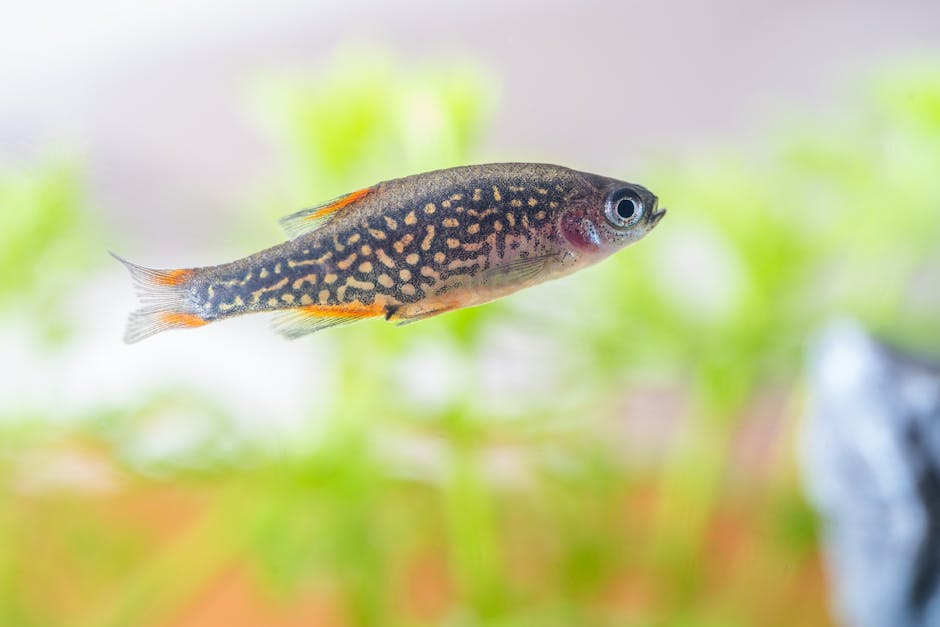Danio erythromicron: A Comprehensive Care Guide
The Danio erythromicron, popularly known as the Emerald Dwarf Rasbora, is a species of cyprinid fish endemic to Inle Lake in Myanmar - a location characterized by clear, shallow, neutral to slightly alkaline water with lush vegetation. With their unique golden to pinkish body color, blue vertical stripes, red fins, and a maximum size of 0.8 inches, they are indeed a sight to behold in any community aquarium. This post aims to provide a comprehensive guide on how to care for this extraordinary species.

Cohabitation: A Peaceful Shoaling Fish
Renowned for their peaceful nature, Emerald Dwarf Rasboras thrive in groups, ideally of at least six individuals, making them a valuable addition to a community tank. Compatibility extends to other small, non-aggressive fish species such as Tetras, Livebearers, Dwarf Cichlids, Catfish, and Loaches. This community setting further enhances the natural behavior of the species, displaying a sense of security that smaller tank setups may not always afford. However, caution should be exercised against including aggressive or fin-nipping tankmates, as the Danio erythromicron is a friendly, non-confrontational species.
Aquarium Setup: A Home Away From Home

An aquarium of at least 10-gallon capacity duly furnished with a fine-gravel or sand substrate becomes an ideal dwelling place for these inhabitants. Decorating with ample live plants, floating vegetation, driftwood, and rocks not only replicates their natural habitat but also provides necessary hiding spots. The water parameters play a crucial role in keeping this species healthy – a temperature between 72°F and 79°F, pH balance of 6.0 to 7.5, and specific water hardness ought to be maintained.
Water Maintenance
Regular water changes are instrumental in ensuring stable water conditions. Monitoring water parameters and making necessary adjustments ensures the sustainability of the habitat, preempts diseases, and promotes overall health. Do remember, managing water quality is paramount as the species is rather adaptable to aquascape choices.
Diet and Feeding: Omnivorous Tendencies
Emerald Dwarf Rasboras are proudly omnivorous, surviving on a diet of high-quality flakes, pellets, and small live/ frozen foods. A mix of these foods ensures a balanced intake of nutrients. A change in their feeding behavior or appetite could be signaling a potential health issue and calls for immediate attention.
Breeding: A Seemingly Straightforward Affair
Breeding of this species may vary and sometimes warrant specific conditions for successful reproduction. The use of fine-leaved plants or a mesh spawning mop for egg attachment is highly suggested. Post-spawning, it is usual for the eggs to hatch within 72 hours and for the fry to start swimming actively by day three or four. However, breeding in a community tank could pose a risk of the eggs being eaten, making a separate breeding tank a safer option.
Final Thoughts on Danio erythromicron Care
Providing a well-planted tank with hiding spots and open swimming areas, maintaining stable water conditions, and providing a balanced diet largely sum up the crucial care requirements of the Emerald Dwarf Rasboras. While the tips in this guide provide a general overview, remember that individual fish may exhibit unique behaviors and preferences that might necessitate specific care attention. Hence, continuous observation and necessary adjustments are crucial in ensuring their wellbeing.
